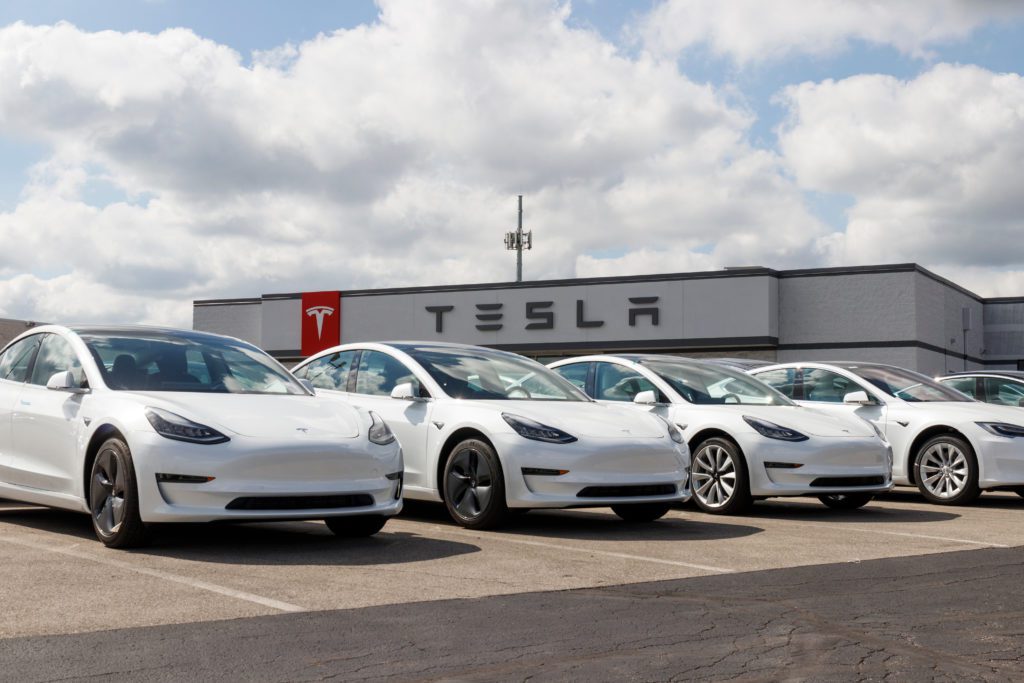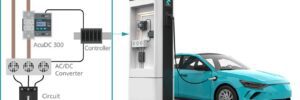
Ever since Tesla’s 2003 founding, industry observers (and even the company’s own execs) have been predicting that the giant global automakers would respond to the new company’s challenge, produce their own compelling EVs, and surpass (or perhaps even acquire) the upstart.
Two decades later, that scenario seems more unlikely than ever. As Tom Randall writes in a recent article in Bloomberg, 2023 was supposed to be the year that the legacy automakers “finally put up a fight for electric cars.” GM and Ford are delivering electric versions of some of their most popular models, Volkswagen and Mercedes each have a range of new EVs on sale, and every major automaker is investing heavily in new battery plants and other supply chain infrastructure.
However, the US Big Three are struggling to bring their new EVs to market. In February, Ford CEO Jim Farley spoke candidly about production problems with the F-150 Lightning electric pickup and the Mustang Mach-E. In July, GM admitted that it was forced to delay the release of its electric Silverado, thanks to problems at an Ohio battery factory. Stellantis doesn’t even plan to begin selling battery-electric vehicles in the US until 2025. Over in Japan, Toyota is just beginning to think about considering possible plans to try to come up with some sort of electrification strategy (maybe).
Another oil slick on the Big Three’s road to electrification: disagreements with labor over the transition to EVs—a problem that, for better or for worse, union-busting Tesla doesn’t have. As the UAW strikes continue, US CEOs have been throwing out apocalyptic warnings. “Union demands would force Ford to scrap its investments in electric vehicles,” said Jim Farley a couple of weeks ago, when tensions with the UAW were at their height. GM CEO Mary Barra hinted that hiking workers’ pay would hinder her company’s development of EVs. (The announcement that GM will allow battery plant workers to be included in a new contract with the UAW sounds like a step towards a resolution of the standoff, and hopefully we’ll hear no more such irresponsible—and implausible—threats.)
All things considered, 2023 might turn out to be the long-awaited Year of the EV, but it certainly won’t be the Year of the Traditional Automakers. “With just three months remaining, 2023 has been less a redemption story for legacy automakers than further evidence of their quagmire,” Bloomberg’s Tom Randall writes. “In the US, Tesla has been expanding production about as fast as all of its competitors combined. The EV maker accounts for 61% of fully electric cars ever sold in the US, making it more dominant in EVs than Apple is in smartphones.”

Tesla has kept up the pressure with a relentless series of price cuts—its Model 3 and Model Y are now selling at their lowest prices in history, and Model Y may end up as the best-selling car in the world for 2023. Oh, and by the way, the vehicles continue to earn Tesla some of the highest profit margins in the industry.
The only automaker that could be called a competitor to Tesla on the global market is China’s BYD, which, as Bloomberg points out, is the first example of an existing automaker that made the transition from selling fossil cars to profitably selling EVs. Plenty of pundits have posited that the legacy automakers’ electric struggles stem from trying to sell EVs while simultaneously trying to protect their investments in gas-burning technology, and BYD provides an object lesson. In 2021 the company decided to stop making ICE vehicles, allowing it to focus entirely on the coming technology. Within two years it had displaced Volkswagen as the best-selling car brand in China. In the first half of 2023, BYD sold considerably more plug-in vehicles than Tesla.
Is Tesla invulnerable? Not at all. History tells us that companies that dominate the early stages of a tech revolution often dwindle to minor players once the new technology matures. The legacy automakers’ biggest advantages—strong brands and access to massive amounts of capital—are still very much in play, and (with a couple of notable exceptions) they aren’t standing still. Over $100 billion has been invested in US EV and battery manufacturing since 2020.
However, one thing is certain: the legacy firms’ dreams of an “orderly transition” to EVs (by which they mean that they’ll be able to continue selling dinosaur-burners until they’ve recouped their investments in 20th-century factories) are fantasy. An incumbent firm that wants to beat Tesla, BYD and other upstarts (little Rivian has been selling more electric pickups than Ford) is going to have to drop the horse-and-buggy mentality and commit itself 100% to EVs, and accept a world of financial pain. There’s no sign that any of the old-line automakers has any intention of doing so.
Sources: Bloomberg, TechCrunch, New York Times
from Charged EVs https://ift.tt/4IC6N3x

No comments:
Post a Comment